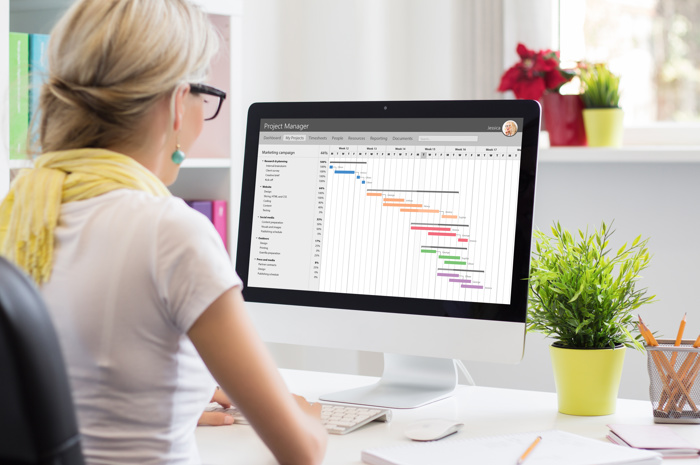Sending and receiving invoices is an ongoing and important task that every company needs to undertake and stay on top of, and writing an invoice for a UK business is a skill in itself as they are used to calculate revenue, apply tax and substantiate expenses claimed on tax returns.
There are also several different types of invoice formats to be aware of, and knowing how and when to use them can help you greatly when it comes to filing taxes and staying in control of company cashflow.
What is an Invoice, exactly?
While most people are aware that a billing invoice is a demand for payment, we don’t tend to think of it in formal terms even though it is a formal ‘time stamped’ document, recording transaction history between the buyer and seller. Invoices are also often confused with receipts, which are only issued after payment, whereas most of the time, invoices are produced before payment is exchanged.
Are invoices a legal requirement?
While invoicing is not mandatory for non-VAT registered businesses, all business have to file their company accounts, so it is highly advisable to send and request invoices as a way to track revenue and expenses and to manage and file your accounts when they are due.
As invoices build up, they can also be a useful way for businesses to track product performance and create seasonality metrics that can be used to forecast future revenue. Additionally, invoices are legally enforceable agreements that ensure that a client pays what they owe.
It is advisable for both buyers and sellers to keep copies of invoices, as they can be used to verify financial activity during an audit, showing what revenue was earned and any tax that was collected.
Creating an Invoice
If this is your first time writing and invoice, and you’re not using off the shelf invoicing software, then looking at example invoices is a good way to find out what needs to be included to format your own, which should include the following:
- Business name, logo and company contact details
- Client’s name and contact information
- A unique tracking number
- The date issued and the deadline for payment
- A description of the products/services that have been provided
- Any applicable taxes (e.g., VAT) and the total amount payable
- Any specific payment methods and terms that apply.
Sole Traders must include their name and any business name in use, as well as an address where any legal documents can be delivered to.
Limited Companies must include the full company name, as it appears on the certificate of incorporation. All director names are also needed, unless you choose not to include any at all.
Sending an Invoice
Although some clients still prefer to be mailed hard copies, most invoices are now sent digitally via email or directly from within invoicing software. It is good practice to notify the recipient when you send an invoice reminding them what it is for, and unless agreed otherwise the customer must complete any payments within 30 days of receiving their invoice.
For new businesses, it’s always helpful to create an invoice template with your fixed details and terms of payment.
Following up on payments
You may need to send reminders if you haven’t received payment by the due date, and like invoices these can be templated beforehand to save time. It’s also advisable to track payments either manually or through accounting software, and to provide receipts for customers to confirm that payments have been made.
Types of invoices
As a business it is important to have an understanding of the different types of invoices and when to use them to produce conclusive and accurate records for your particular use case. For example, while sales and purchase invoices are fairly self-explanatory, you may not know that a tax invoice is one that includes VAT, and which all
VAT registered businesses must send.
Invoice types and when to use them
| Sales invoice | The company sends an invoice for goods/services sold |
| Purchase invoice | The company receives an invoice for goods/services bought |
| Tax invoice | Includes VAT (all VAT registered businesses must send tax invoices) |
| Final invoice | The last invoice in a series of progress payments for a wider project |
| Recurring invoice | For managing regular payments for repeat goods/services |
| Pro forma invoice | Shows the price of goods/services before the sale is finalised |
| Commercial invoice | For trading across borders. Invoices include customs duties and fees |
| Credit/debit note invoice | For discounting or amending payment amounts after the initial sale |
For larger projects requiring progress payments, multiple interim invoices can be sent, the last of which is termed a final invoice, while recurring invoices are sent for repeat payments such as subscriptions or leases. A pro forma invoice gets created to show the price of goods before a sale is finalised, and a commercial invoice is used by businesses important and exporting goods and services to clarify border responsibilities, including customs, duties, and fees.
In cases where goods are returned, overcharges occur, or discounts are required, a credit note invoice is to be used. Whereas a debit note invoice is issued if additional payment is required to complete the sale, such as if a project took longer than expected.
Invoicing helps your business flourish
By understanding how to write an invoice, what information to include and the different use cases for writing an invoice, you will not only better control company finances and improve client relations, you will be prepared when it comes to paying taxes and filing your annual accounts. To find out about our managed filing service, visit
Easy digital Company or
contact us and we’ll be in touch.
This article is information only and has been prepared for general guidance on matters of interest only, and does not constitute legal, accounting, tax, investment or other professional advice or services. You should not act upon the information contained in this article without obtaining specific professional or legal advice. No representation or warranty (express or implied) is given as to the accuracy or completeness of the information contained in this article, and, to the extent permitted by law, Comdal Limited, its members, employees and agents do not accept or assume any liability, responsibility or duty of care for any consequences of you or anyone else acting, or refraining to act, in reliance on the information contained in this publication or for any decision based on it.





















